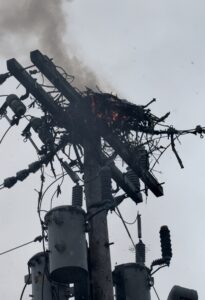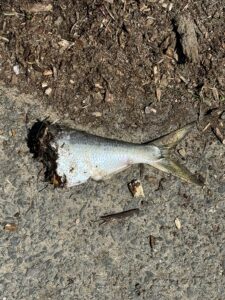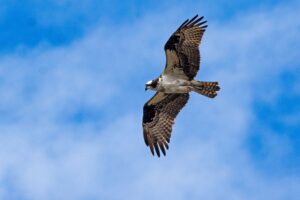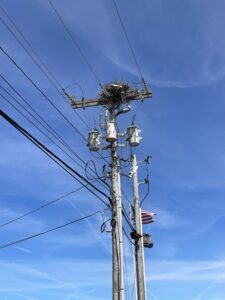Every day, before I head into work, I go to see what’s swimming around MacMillan Pier.
In the winter, this mostly involves looking at ducks, checking on that one thick-billed murre, and keeping an eye out for Iceland gulls. Now, as these winter visitors begin to depart, they are being replaced by swarms of double-crested cormorants.
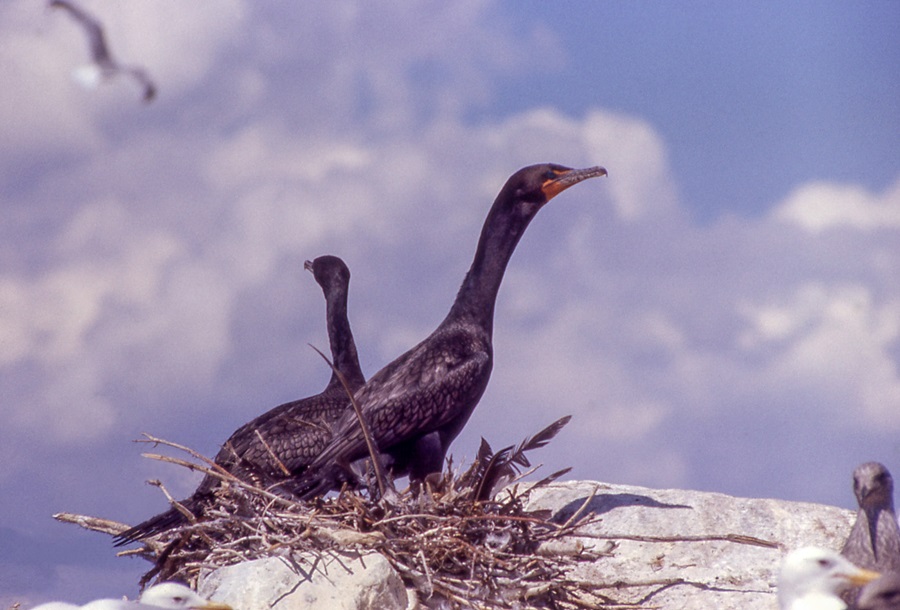
There were just one or two each day in mid-March, but their numbers are quickly climbing. On March 20, there were 11 roosting on the breakwater. By March 24, there were 41. The next day, 71. Two days later, the roosting flock was over 100.
Cormorants congregate on the breakwater to build their nests. Mid-April is early in our birds’ nesting season, but a handful of species have gotten started. Ospreys have returned to their platforms, great horned owls are building tucked-away stick structures, and the first robins are gathering twigs for the nests they build under awnings.
We take for granted that birds build nests, but each one really is a remarkable feat. Most other animals that build complex structures either have fairly dexterous appendages, like beavers, or do so in large colonies, like termites or wasps. Birds mostly build nests by themselves, mainly using their beaks, which lack the dexterity of mammalian hands. And yet they create intricate structures to keep their eggs safe until they hatch.
It’s worth noting that a nest is not a bird’s “home” in the same way a gopher’s burrow or fox’s den might be a year-round lodging. Nests are designed to serve one function: they are a place to lay eggs, incubate them, and rear chicks until they can leave. After that point, the nest is abandoned. Except for species like bald eagles, which will reuse and build upon their nest each year, most birds start fresh with every brood.
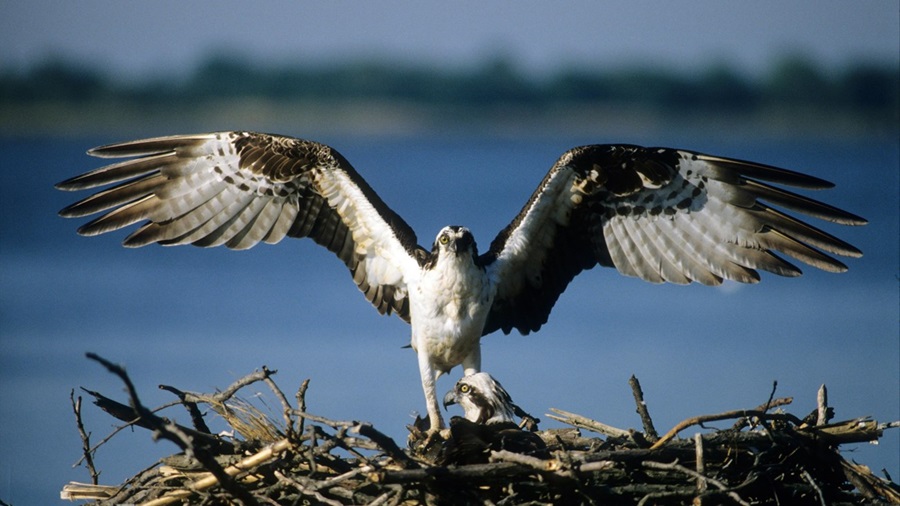
Depending on the bird, nest construction varies widely. The lowest-effort nests are called “scrape” nests. These are no more than an indentation in the ground and are used by most shorebirds and terns that nest on the Cape. Some birds take advantage of natural indentations while others make their own. Piping plovers dig theirs with a few kicks, while least terns rock side to side and sink into the sand, pushing it out of the way to make room for their eggs.
The Baltimore oriole, a migratory bird that mostly won’t return to the Cape until early May, takes a diametrical approach when it comes to effort. Female orioles construct elaborate hanging nests that dangle from the branches of deciduous trees. The birds begin with long fibers that they select and strip from nearby plants to serve as support structures for a pouch that they weave by running smaller fibers between the supports, almost as if they were crocheting, to form the nest. Then they use downier fibers to line it.
These are durable structures — a study done at the University of Massachusetts in the 1970s found that 85 percent of Baltimore oriole nests stayed hanging a full year after their construction, though the orioles don’t re-use them.
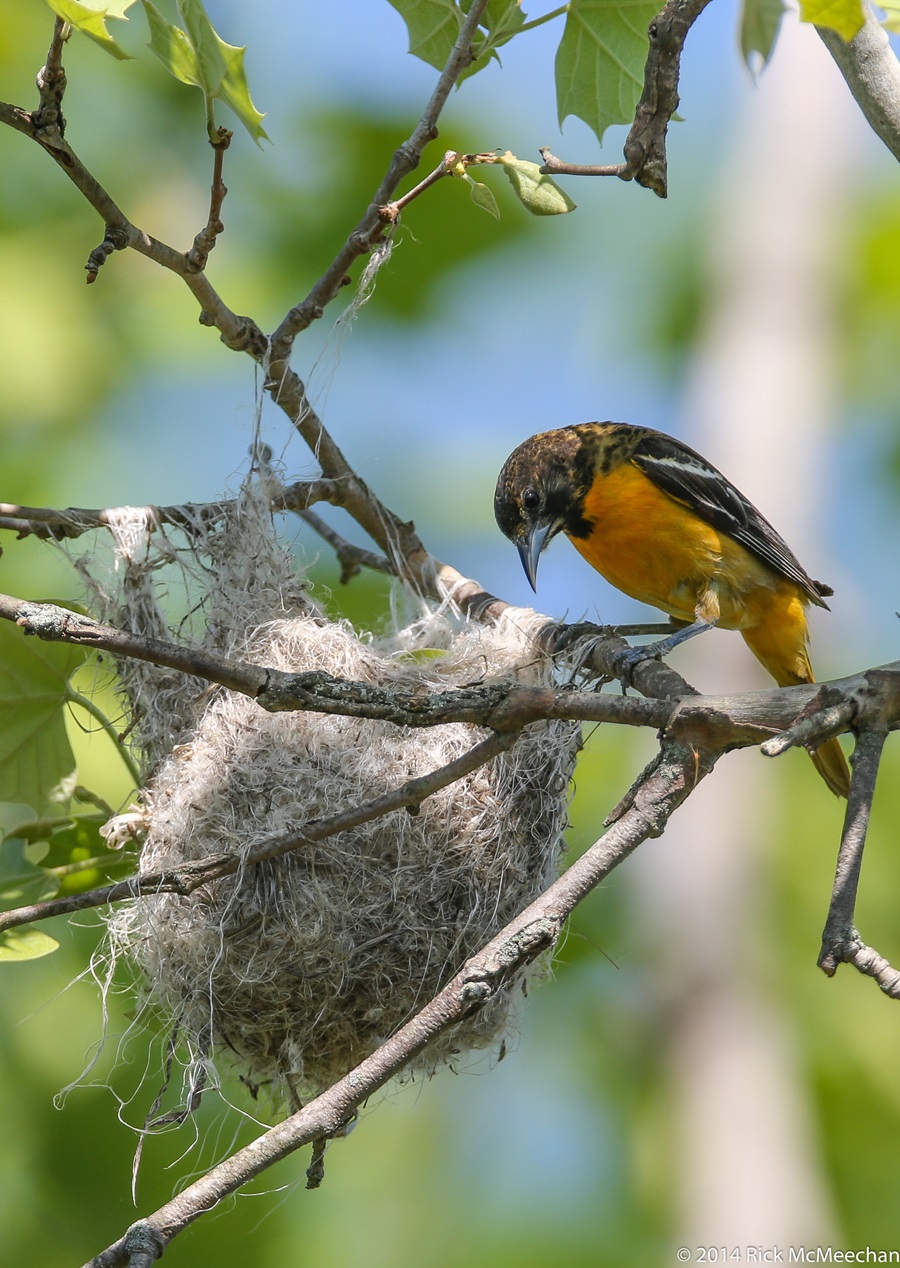
Between these two extremes are the smooth, bowl-shaped cup nests of the design that comes to mind when you think “bird’s nest.” This is the design employed by most songbirds, and they are usually made of plant fibers. There are exceptions, though: barn swallows make their cup nests out of mud; hummingbirds and small songbirds like warblers use considerable amounts of spider silk; and chimney swifts use a mixture of twigs and their own gooey saliva.
The other common songbird nesting strategy is cavity nesting — that is, using a hole in a tree, usually dug by a woodpecker or caused by natural breakage, to raise their young. Chickadees, bluebirds, tree swallows, and even some waterfowl like wood ducks nest in cavities. These nests have more protection from the elements than others, but they are also vulnerable to certain predators. Snakes and crows, for instance, will try to entrap the young in a cavity and eat them.
So, these birds have strategies to protect their nests: red-breasted nuthatches smear sap on the outside; white-breasted nuthatches do the same with the bodies of pungent insects to ward off predators; and a variety of species use snake skins in their nests. What makes snake skins work is not fully understood, but they are especially effective in cavity nests, according to a study published earlier this year in The American Naturalist based on work done at Cornell.
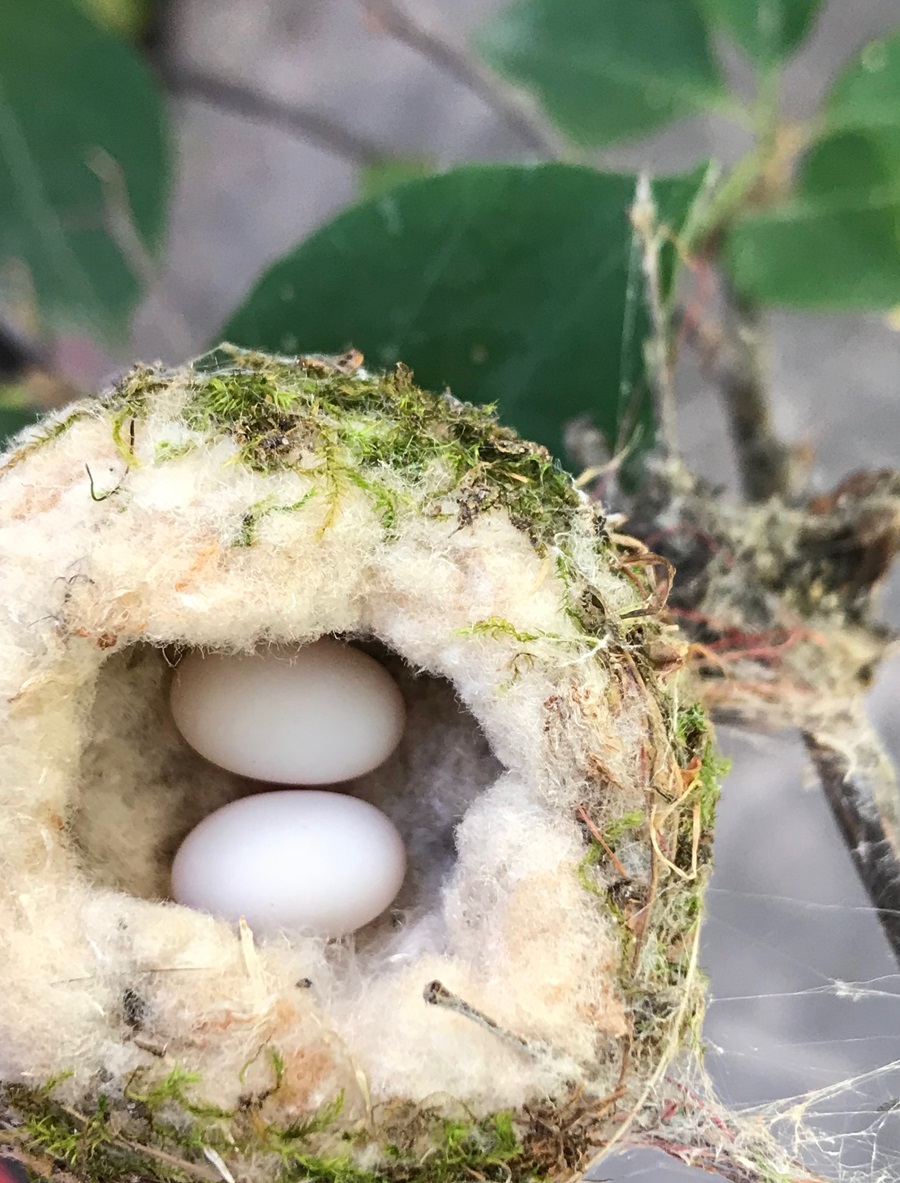
For all birds, nest predators pose a serious threat. Birds’ eggs are nutritious and abundant, a perfect snack for other animals ranging from jays to turkeys to deer. That’s why birds like terns and gulls nest in colonies that make it possible to dive-bomb would-be predators. Cup nesters hide their nests deep in bushes or in trees, and birds like cormorants nest on inaccessible rocky islands.
Cormorants, though, must contend with other cormorants. Cormorant nests are made mostly of sticks, all poking out from the central structure, but they will incorporate other materials like rope, plastic buoys, fishnets, and even the bodies of other dead cormorants. According to the Cornell Lab of Ornithology’s Birds of the World database, male and female cormorants build nests together, with the male gathering material and the female assembling it. If the female isn’t there to guard the stash, other cormorants will steal the male’s gathered material for their own nests. Clearly, good nesting material is a valued commodity among these birds.
Newly hatched birds can fall prey not only to big predators but to tiny enemies like blowflies, ticks, and lice. To ward off these bugs, some birds incorporate in their nest material pungent green plants, which act like bug spray. In cities, house sparrows will use cigarette butts for the same purpose.
As spring turns into summer, the number of nesting birds around Cape Cod will continue to climb. With most nests out of sight, inaccessible, or well-guarded, though, we won’t much notice. Not until our ponds are full of ducklings and our woods are full of the sounds of begging nestlings will we realize just how much nest building has been going on around us.
